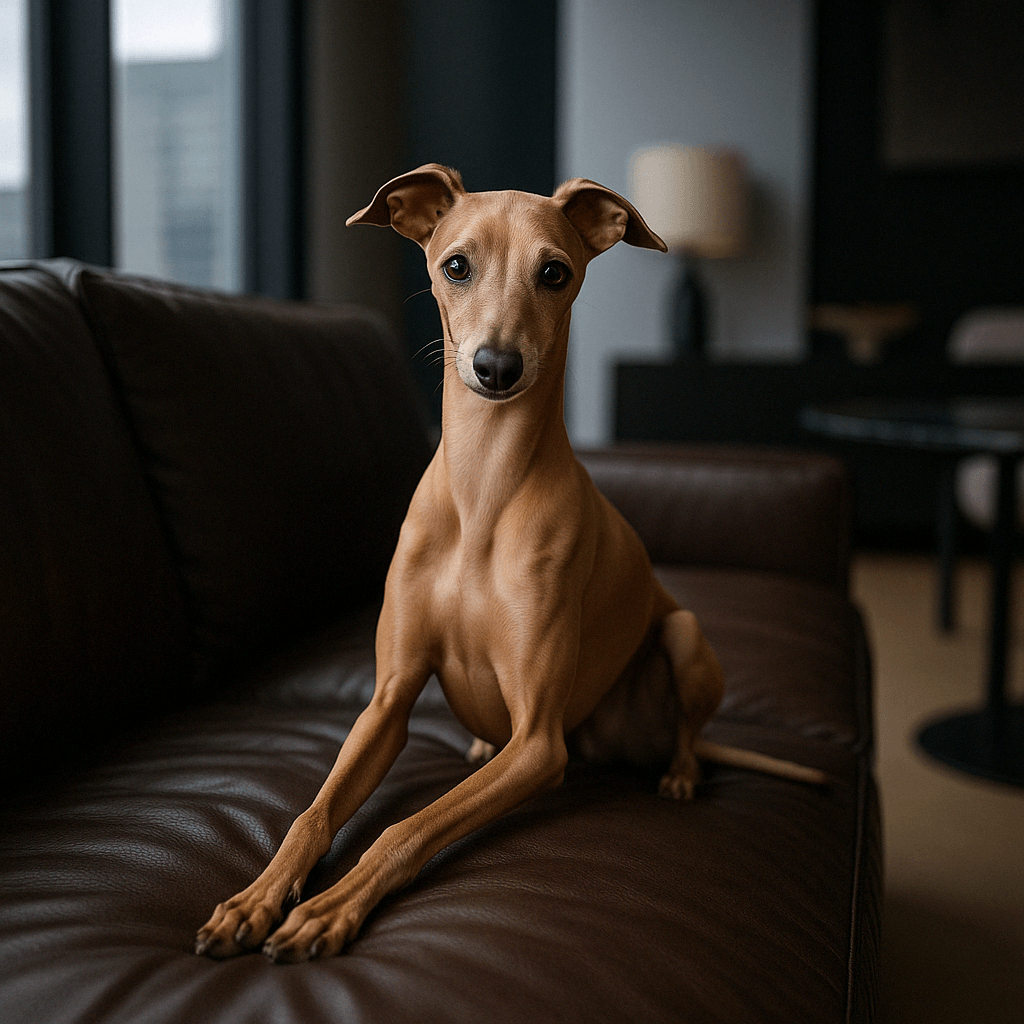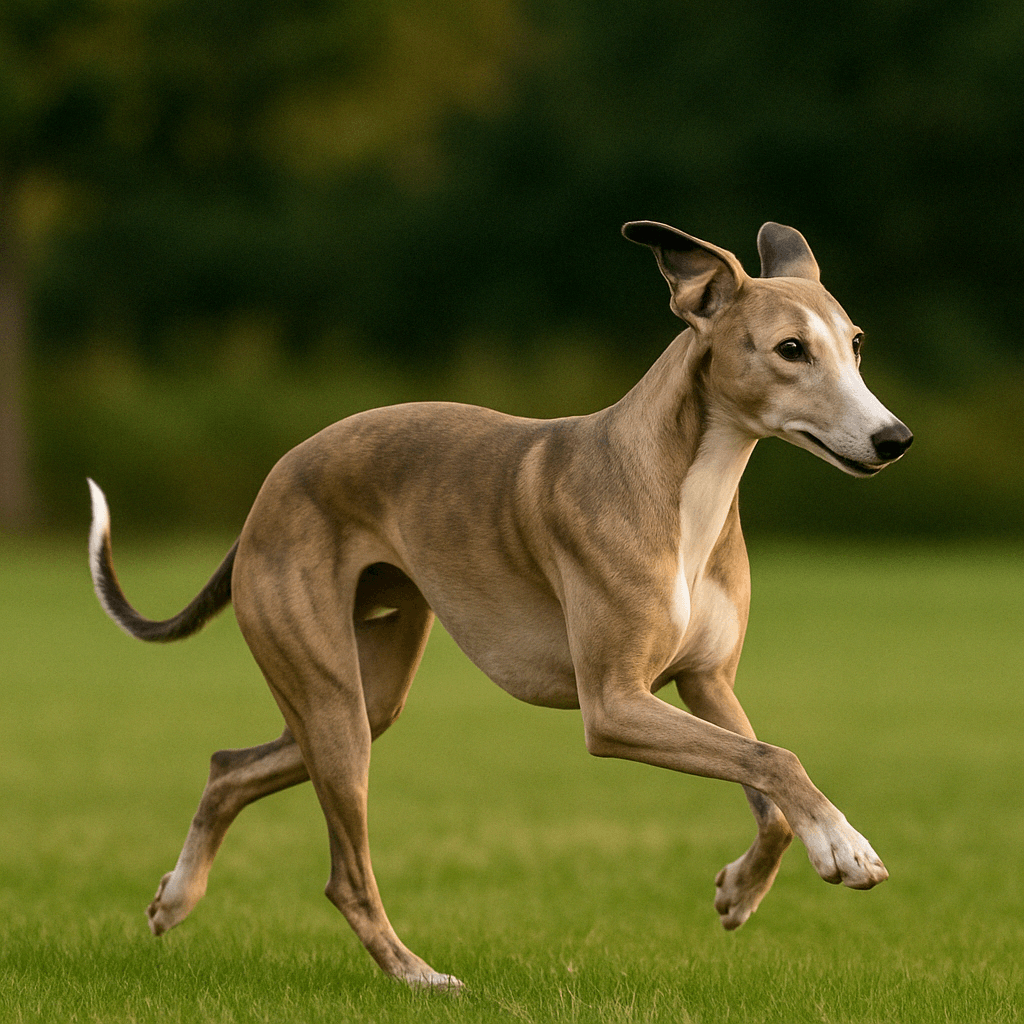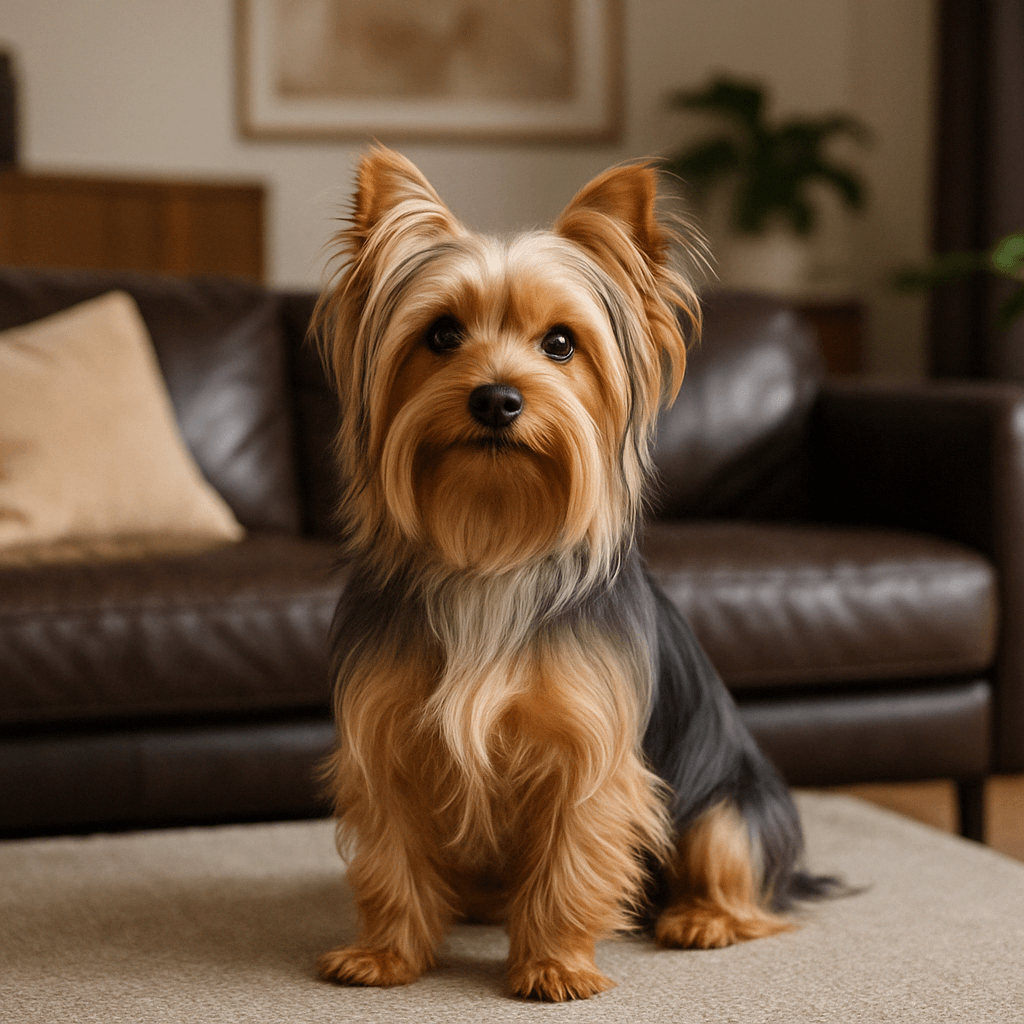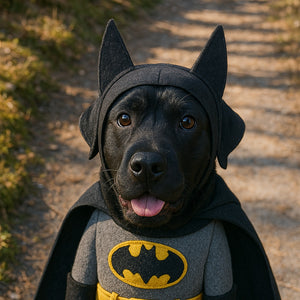
Italian Greyhound – subtle elegance and a loyal heart in miniature
📜 Origin and history of the breed
The Italian Greyhound, though today considered a companion dog, has a history stretching back thousands of years. Its roots can be traced back to ancient Egypt, Greece, and Rome, where miniature greyhounds appeared on vases, frescoes, and sculptures as companions of rulers and aristocrats. Archaeological finds from pharaonic tombs indicate that dogs resembling the Italian Greyhound were revered and mummified, attesting to their exceptional status.
During the Renaissance, the breed truly flourished in Italy, where it became a symbol of prestige and a refined lifestyle. It was a court dog, adorning the salons of the aristocracy and royal chambers. Often portrayed by eminent painters such as Botticelli, Van Dyck, and Goya, it became the embodiment of the grace, delicacy, and culture of high society.
In the 18th and 19th centuries, the Italian Greyhound also gained recognition in England, where breeders sought to stabilize its appearance and temperament. It gained popularity in royal courts, including with Queen Victoria, and in Russia with Catherine the Great.
In the 20th century, the breed gained status as a lap and show dog. Thanks to its charm, elegance, and compact size, it perfectly fits the lifestyle of modern owners—both those living in the city and the countryside.
Today, the Italian Greyhound is one of the most valued small companion dogs – combining the beauty of ancient times with the modern need for closeness and tenderness.
In the Middle Ages and the Renaissance, it was a favorite of queens, princes, and painters. It frequently appeared at the Italian and French courts, earning it the nickname "the dog of the salon." Its delicate beauty, cleanliness, grace, and compact size were appreciated. It also possessed qualities as a small-game hunting dog.
Today, the Italian Greyhound is primarily a companion dog – elegant, balanced and extremely loyal.
🧠 Character and temperament
This miniature greyhound surprises with its size and emotional depth. It's very affectionate, attached to its owner, and hates being alone. It loves closeness—it happily snuggles under a blanket, sleeps on laps, and follows its owner's every step.
It is characterized by:
-
gentleness and empathy – perfectly senses the mood of the household members and quickly responds to changes in the atmosphere at home;
-
need for silence and a predictable environment – feels best in a calm, stable environment;
-
outstanding loyalty – very strongly attached to one person or to the entire family;
-
tendency to separation anxiety – when left alone, may suffer emotionally, howl or destroy objects;
-
can be shy or distrustful of strangers – requires socialization at a young age;
-
he feels great in a quiet home where he can relax without too much stimuli.
He's exceptionally affectionate and often seeks physical contact—he'll rest his head on your knee, snuggle up, or try to jump onto your lap to fall asleep. Although he's small, he's not your typical "carry-on dog"—he doesn't like to be treated like a toy. He demands respect, like any dog.
Despite his sensitivity, he's also active and bouncy. He loves to run, fetch, and explore his surroundings—although always with the thought of returning to his human.
📏 Size and appearance
The Italian Greyhound is the smallest member of the sighthound family, but its compact size in no way detracts from its elegance and harmonious build. It is an exceptionally well-proportioned, subtle, and refined dog—resembling a miniature sculpture, gracefully crafted.
-
Height : 32–38 cm – males may be slightly taller, females slightly smaller
-
Weight : 3.5–5 kg – exceptionally light, with a delicate bone structure
-
Silhouette : slim, arched in the back, with a clearly defined waist and long, thin limbs
-
Head : narrow, with a clearly elongated muzzle, delicate and harmonious
-
Eyes : large, dark, shiny - they give the dog a slightly melancholic, but at the same time alert expression
-
Ears : thin, set high, folded in a rose shape
-
Coat : very short, silky, close fitting to the skin - no undercoat
-
Color : most often solid – black, blue, gray, fawn, isabella, but white markings are also allowed (e.g. on the paws, chest)

The Italian Greyhound moves with extraordinary lightness and elasticity. Its stride is long and fluid, almost balletic – every movement evokes a sense of subtlety and precision. Its long legs, narrow waist, and delicate anatomical curves create the image of a dog almost born to run, but also to be admired.
The quintessence of grace and subtlety. The Greyhound looks like a miniature greyhound – full of grace and lightness.
🩺 Health and the most common problems
The Italian Greyhound is a generally healthy breed, but like any dog with a delicate build and small size, it has its typical problems that are worth paying close attention to.
The most common health problems:
-
Limb fractures – thin bones and a lightweight body structure mean that falls from heights (e.g., from a couch) can result in fractures. It's a good idea to use stairs and avoid jumping on furniture.
-
Periodontal disease and tartar buildup are very common problems in Greyhounds. Daily oral hygiene or dental chews are recommended.
-
A tendency to develop skin allergies , particularly to food, pollen, and synthetic materials. Symptoms include itching, scratching, and skin lesions.
-
Sensitivity to cold – the lack of an undercoat causes the Greyhound to become cold very easily. Clothing is essential and long walks in low temperatures should be avoided.
-
Separation anxiety and stress – related to a strong attachment to the caregiver. Symptoms include howling, scratching doors, and urinating in the house.
-
Digestive system disorders – sensitive stomachs can occur, so the diet should be easily digestible and well-balanced.
Prevention and care:
-
Regular veterinary check-ups (at least once a year, seniors – every 6 months)
-
Supplementation to support joints and bones (calcium, collagen, vitamin D, glucosamine)
-
Daily oral care
-
Protection against cold and drafts – also at home
-
A balanced diet without artificial additives and fillers
-
Socialization from puppyhood and gentle training methods to reduce stress
With responsible care, the Italian Greyhound can enjoy excellent health well into old age. Its fragile build requires greater care, but in return, it offers long-term companionship full of gentleness, charm, and emotional closeness.
🛁 Care
Grooming the Italian Greyhound is relatively simple, but requires regularity and gentleness. Thanks to its very short and close-fitting coat, this dog doesn't shed excessively, but its skin is sensitive and prone to abrasions, allergies, and dryness.
-
Coat : No clipping or trimming required. Simply wipe with a soft, damp cloth or mitt once a week to remove dust and debris.
-
Bathing : Once every few months or when heavily soiled. Use only mild shampoos for dogs with sensitive skin.
-
Skin : it is worth using natural oils or protective balms (e.g. coconut) in case of dryness or abrasions – especially in winter.
-
Teeth : Due to their tendency to tartar buildup, daily oral hygiene is highly recommended. Both toothbrushes and dental chews are effective.
-
Nails : should be trimmed every 2-3 weeks – greyhounds often do not wear them down naturally due to their light build.
-
Ears and eyes : Wipe once a week with an ear and eye cleanser. Greyhounds are prone to secretions.
-
In winter : essential clothing—sweatshirts, overalls, sweaters—help protect your dog from the cold. It's also important to protect their paw pads with balms or boots, especially when walking in frosty or salty conditions.
The Italian Greyhound hardly sheds – it is perfect for allergy sufferers, people who value cleanliness at home and those who do not want to spend a lot of time on grooming but are ready to take care of their dog's comfort every day.
🧠 Training and activity
The Italian Greyhound is an intelligent dog, but also very emotionally sensitive. Training requires a particularly gentle approach. Overly harsh methods or a raised voice can discourage them and even cause stress. Therefore, positive reinforcement—rewards, praise, treats, and a warm tone of voice—produces the best results.
Training:
-
Short, frequent sessions : a greyhound gets bored quickly, so training should be dynamic and varied;
-
Basic commands : sit, stay, come to me – very useful in everyday life and during walks;
-
Toilet training : it is worth starting early and consistently, as this breed can be delicate and easily stressed;
-
Socialization : From puppyhood, it is a good idea to familiarize your dog with different sounds, places and people to avoid shyness later on.
Physical activity:
-
Walks : 3–4 times a day, but not too long – a greyhound does not need marathons, only regular and calm walks;
-
Games at home : light fetch, string pulling, exercises with logic toys;
-
Running : likes short sprints in a fenced area – it is worth providing him with a safe space to run;
-
Smell games : e.g. a smell mat, hiding treats around the house – these are great for stimulating his senses.
What to avoid:
-
intense sports (e.g. agility, dog frisbee),
-
jumping from a great height,
-
forcing contact with strange dogs or people,
-
excess noise and chaos – the greyhound becomes easily overwhelmed.
This dog enjoys having its own routine and a peaceful environment. When it feels safe and has established routines, it happily participates in family life and reveals its warm, loving side.
🏡 Italian Greyhound in the family
The Italian Greyhound is a dog that thrives as a full-fledged family member. Its strong need for closeness, affection, and stability allows it to thrive in homes where it can count on plenty of attention, peace, and predictability.
In his home relationships, he is distinguished by his intense attachment and subtle empathy – he can perfectly sense his caregivers' emotions and gently accompany them in their daily lives. He enjoys being the center of home life, but he doesn't impose himself – just being around his human is enough for him.
He gets along well with children, especially those who understand that a Greyhound is not a stuffed animal. His delicate build requires gentle handling and avoidance of rough play. He is a dog that enjoys cuddling and relaxing with children, provided they are treated with gentleness.
Greyhounds often form harmonious pairs with other dogs – they thrive with dogs of a similar temperament and size. They can be shy or dominated by more energetic dogs, so early socialization is essential.
It's also an excellent dog for the elderly and lonely – its calm nature and moderate need for exercise make it a perfect fit for those with a sedate lifestyle. It thrives in apartments, doesn't require a garden, and its small size allows it to be taken almost anywhere.
They don't tolerate loneliness – prolonged separations can cause stress, separation anxiety, and even psychosomatic symptoms. They thrive in homes where at least one member spends a lot of time at home.
Perfect for seniors, couples and families with home office mode.
💤 The perfect place to sleep
The Italian Greyhound loves comfort – warmth, softness, and a snuggle that gives them a sense of security. Therefore, their sleeping area should be not only aesthetically pleasing but also ergonomic and well-insulated from the ground.
The Osaka Fluffy bed from Petto is a great choice – soft, springy, available in neutral colors, and designed with delicate, slim dogs in mind. The high walls create a cozy feel, and the fluffy filling helps retain warmth even on colder days.
👉 See the Osaka Fluffy bed – perfect for an Italian Greyhound
Placed in a quiet corner of the apartment, away from drafts and noise, it will become a place of regeneration and rest for the greyhound - essential for its mental and physical balance.
🧺 Caring for an Italian Greyhound
The delicate nature of this breed requires not only emotional sensitivity but also attention to the dog's daily functioning in the home. For the sake of your pet's health and comfort, it's important to provide them with appropriate living conditions tailored to their anatomical structure and needs.
One of the most important aspects of care is safe access to furniture —couch, bed, or armchair. Jumping and jumping from heights can lead to injuries and fractures in greyhounds. The Takai steps from Petto are an ideal solution —light, soft, stable, and designed for small dogs with delicate paws.
👉 See the Takai steps – safe access to the couch
Daily care should also include a suitable bed, protection against drafts and low temperatures, regular hygiene, and a consistent daily rhythm that gives the greyhound a sense of security.
🚗 Traveling with an Italian Greyhound
Due to their delicate build and sensitive nature, the Italian Greyhound requires special care when traveling, especially by car. The most important thing is to ensure their safety, thermal comfort, and a sense of stability.
The Oi seat from Petto is the ideal solution – designed with small, sensitive dogs in mind. Its raised edges and soft interior protect the dog's body from impacts and reduce the risk of injury. Additionally, the seat's mounting straps prevent the seat from shifting, and special latches prevent your pet from jumping out on its own.
👉 See the Oi car seat – comfortable travel with your dog
It's always a good idea to have a soft blanket and your dog's favorite toy with you to help him relax in a new place.
❓ Frequently asked questions (FAQ)
Is the Italian Greyhound a dog for beginners?
Yes, but it works best with calm people who can give it a lot of attention and be present for most of the day.
Is this breed suitable for children?
Yes, provided that children are taught gentleness and respect – the dog is very fragile and sensitive.
Can an Italian Greyhound live in an apartment building?
Absolutely. He's quiet, clean, and inactive at home—walks and human contact are enough for him.
Does this breed of dog bark a lot?
No – he is usually quiet, although he may be alert and signal anxiety.
Does it require special clothes?
Yes. Greyhounds get cold very easily – in winter and on cold days they need jackets or sweatshirts.
Can an Italian Greyhound run without a leash?
Only in safe, fenced areas. They have a strong chasing instinct and may flee after a fast-moving object.
How long does an Italian Greyhound live?
On average 13–15 years, with good care even longer.
🌟 Interesting facts about the Italian Greyhound
-
🏛️ A breed with ancient pedigree – Italian Greyhounds were favorites of the aristocracy already in ancient Rome and Greece.
-
👑 A favorite of queens – Queen Victoria had several greyhounds, as did Catherine the Great and Marie Antoinette.
-
🧊 Cold-loving? Absolutely not! – Greyhounds hate the cold – they happily wear sweaters and snowsuits.
-
🧠 Mini Greyhound with a Big Personality – Although they look fragile, they are dogs with a strong character, full of emotions and needing relationships.
-
🏃 Surprising speed – they can run at speeds exceeding 40 km/h, which is an impressive result for their size!
-
📷 Model beauty – Italian Greyhounds are often the heroes of fashion shoots, advertisements and interior design photos – their silhouette is almost sculptural.
📌 Summary
The Italian Greyhound is the epitome of elegance, subtlety, and loyalty. Small in stature but large in spirit, it makes an excellent family dog, a companion for single people, a companion for seniors, and an aesthetically pleasing everyday accent for lovers of beauty. This dog craves closeness, and its attachment to its owner can be compared to that of a cat—it enjoys being close, snuggling, and sharing its home space with its humans.
Its small size, quiet disposition, and low shedding rate make it ideal for apartment life, even in large cities. At the same time, it requires careful care: protection from the cold, gentle socialization, a safe environment, and a stable routine. It's not a dog for everyone—it's a delicate, sensitive dog that thrives best in calm and attentive homes.
In return, they offer an extraordinary bond, immense love, and a presence that fills everyday life with gentleness and elegance. The Italian Greyhound is more than just a breed—it's a lifestyle that combines classic grace with modern tenderness.




 https://petto.com.pl
https://petto.com.pl